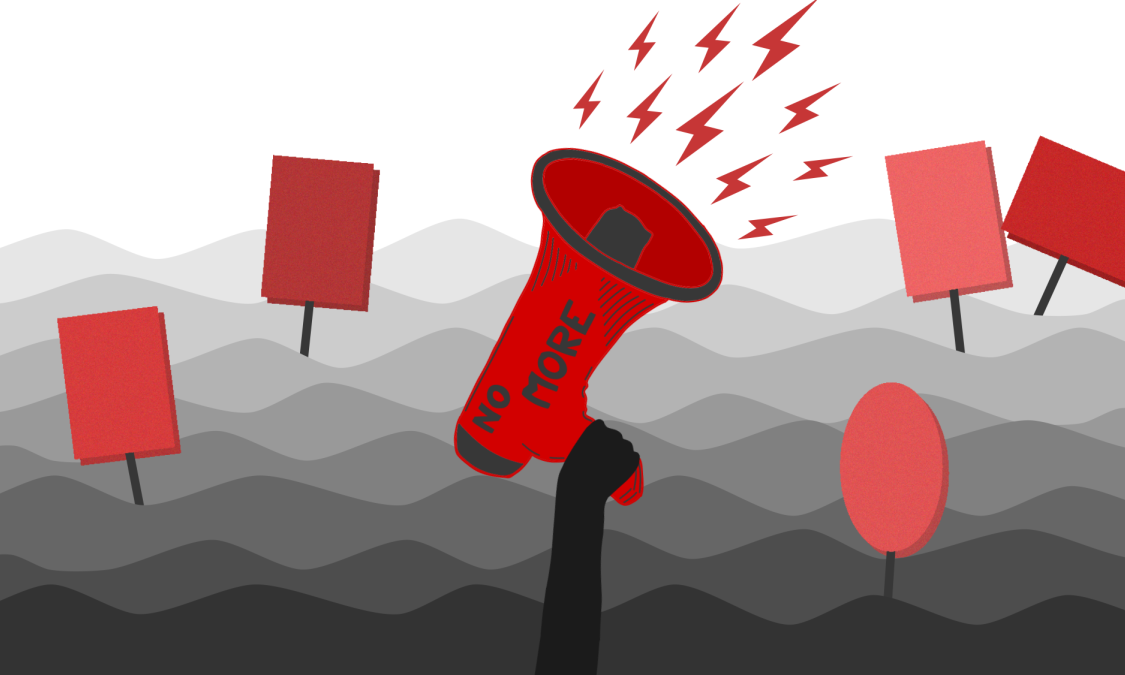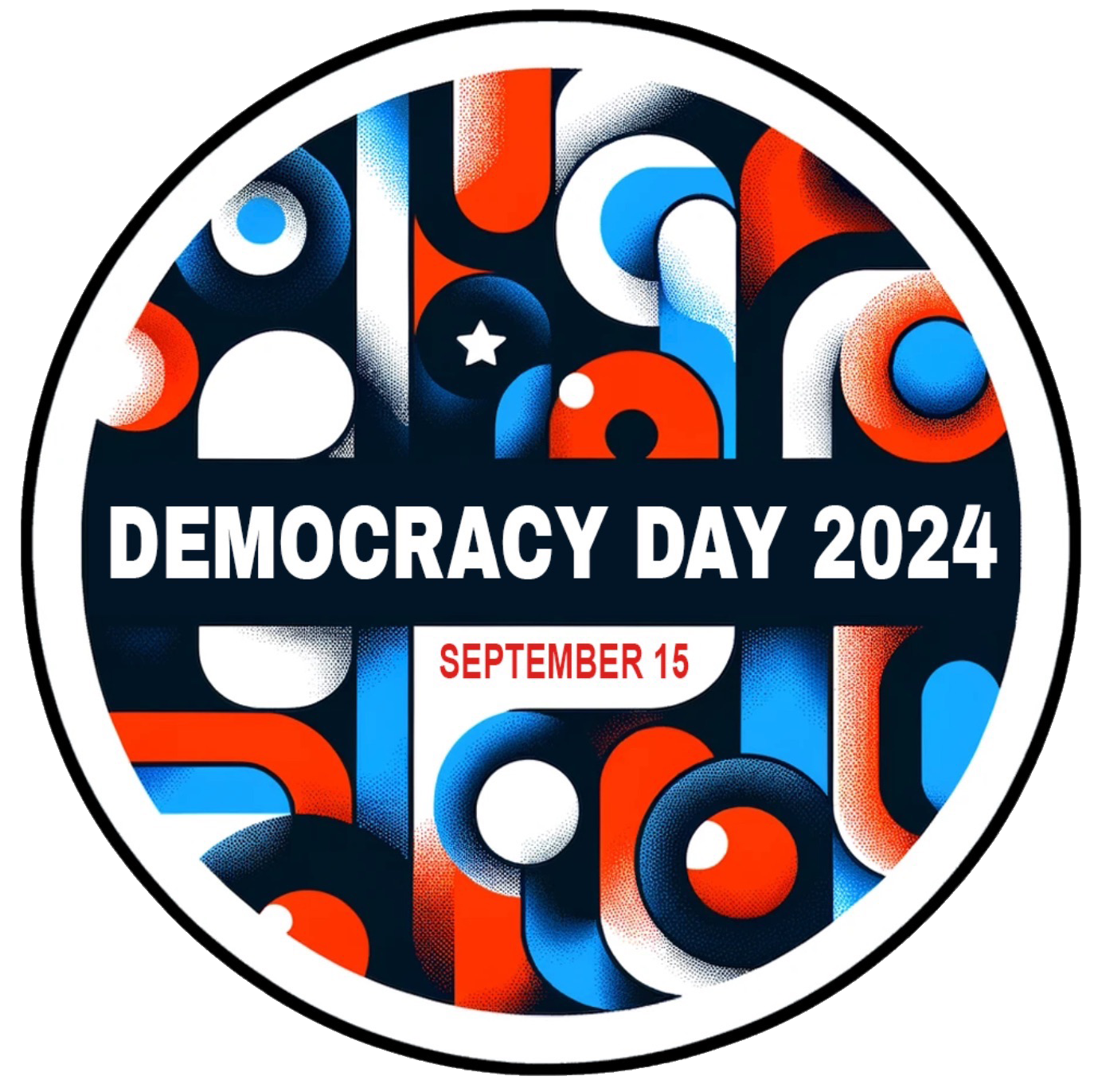This story is published as part of U.S. Democracy Day and the Utah College Media Collaborative, a cross-campus project bringing together emerging journalists from Salt Lake Community College, the University of Utah, Utah State University and Utah Tech University.
As a public university, the U is required to protect the First Amendment right of free speech. Speech can take several forms, like protests, signs or structures. Different forms of speech are subject to different regulations at the U.
Public universities across the country are constitutionally required to protect First Amendment rights on their campuses. Rebecca Walsh, director of PR and communications at the University of Utah, says that preserving these rights is more than just a legal obligation.
“I think fundamentally, university leaders take the role of educating both our campus community and the outside community about free speech very seriously,” Walsh said. “It’s foundational to what public universities do in the U.S.”
The U views free speech as an “indispensable part of its educational mission.” But at the same time, it must preserve the safety of the people and property on campus.
Speech regulations are tailored to be as narrow and unrestrictive as possible to balance these goals. Restrictions are content-neutral and only limit speech in regards to time, place and manner.
What is speech?
The definition of speech is not limited to oral or written words. The U.S. Supreme Court interprets the word “speech” in the Constitution as all forms of expression that convey a message. This includes symbols, actions, structures and images.
Some forms of speech are less protected: obscenities, defamation, criminal threats, fighting words and incitement of illegal activity.
Hate speech vs. harassment on campus
Hate speech is protected by the First Amendment. Words that are controversial or unpopular still contribute the free flow of ideas and therefore must be protected. Unless they fall under one of the lesser protected categories, hateful expressions cannot be censored.
The U distinguishes hate speech from harassment. Harassment targets one specific individual rather than a broader group based on an identity or characteristic. The U can censor harassment in instances where it threatens employment or education and creates a hostile environment.
Protesting
Protests and rallies are seen as legitimate forms of expression at the U according to the University Speech Policy.
“We are a public campus, which means that we are open for lawful public protest every day,” Walsh said.
Students enjoy the right to assemble on campus as long as it does not interfere with the safety of the campus community.
Demonstrations can be limited if they are violent, disrupt the U’s functioning, hinder the rights of others or damage private or University property. This includes obstructing pedestrian or vehicle traffic and interfering with research or teaching.
Police may be present at protests to protect public safety. They are neutral and impartial and only intervene when a demonstration is becoming unsafe. They are trained to use force as a last resort.
The Office of the Dean of Students advises not resisting if you are informed that you are under arrest. This prevents other criminal charges and possible injury.
Camping or establishing structures for protests on campus is highly regulated according to the State of Utah Administrative Code. It is only permitted under special occasions.
Posting of signs and structures
The U provides designated spots for campus organizations to post signs, notices and posters. The author or sponsor of the material must be a member of the U community and must be clearly identified. Posts can be notices of events, expression of ideas and opinions or art. However, they cannot be obscene, defamatory or incite lawlessness.
General rules around posting on campus include: only one poster per event per bulletin board, no more than three posters on one board from the same author at a time, no covering other signs and a size limit of 8.5-by-14 inches. Posters must be dated with an expiration date at the time of posting that is no longer than 15 days after posting.
The campus community can use structures like lawn signs, tables and booths to express viewpoints or opinions. Groups need a permit from the Scheduling Office before setting up these structures, which can be in effect for up to 30 days. Permits can be issued if the design and location of the structure do not interfere with the normal functions of campus.
Different regulations apply for events like commencements and athletic events.
Student groups
The U recognizes three types of student groups. These include registered student groups, affiliated student groups and sponsored student groups.
Registered groups can be formed by any group of three current students. They are encouraged to have an adviser, but it is not required. They are not recognized as a part of the U and cannot use university trademarks.
Affiliated groups include sports clubs, fraternities and sororities. They are not university entities, but can use the U’s trademarks with permission. An adviser is required for affiliated groups.
Sponsored groups are promoted by a college or department. They are recognized as part of the U and considered to speak on behalf of the University. They can use the U’s trademarks and must have an adviser.
Free speech facilities
“We have designated free speech areas as well as public walkways where students, staff and faculty are free to express their free speech rights,” Walsh said. “If someone wanted to stand up on a box on any one of our walkways and shout to the heavens they could.”
All outdoor spaces at the U are open for free public speech. The Union Plaza is designed with the necessary resources for speakers to address an audience. Facilities can be reserved for instances of up to two hours of public speaking.
“You’re free to come here and express your opinions,” Walsh said. “That’s one of the most amazing things about the First Amendment and public universities.”
Elle Crossley reported and wrote this story as a journalism student with The Daily Utah Chronicle at the University of Utah. Her article is part of U.S. Democracy Day, a nationwide collaborative on Sept. 15, the International Day of Democracy, in which news organizations cover how democracy works and the threats it faces. To learn more, visit usdemocracyday.org.





